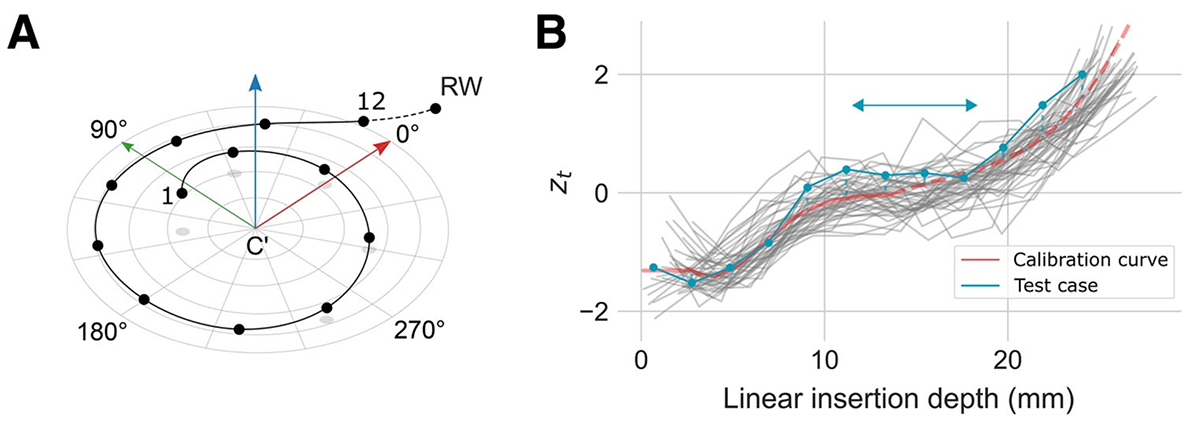2023/05/11 | Research | Rehabilitation & Neural Engineering
Checking CI electrode position without radiation
In a retrospective analysis of impedance telemetry and CT data of patients undergoing cochlear implantation between 2015 and 2021, the Hearing Research Lab of the Inselspital and ARTORG Center has validated an impedance-based method for estimating electrode insertion depth. This radiation-free method could allow for anatomy-based fitting or monitoring of electrode migration and serve as a cost-effective alternative to current radiography assessment.
 A) Local coordinate system with the origin at the cochlear center C’ for ground truth angular and linear electrode insertion depths. The x axis, y axis, and z axis are indicated in red, green, and blue, respectively. The electrode contacts are numbered from apical to basal (1–12). B) Standardized tissue resistances zt vs. ground truth linear insertion depth of all cases with a fully inserted electrode array (N = 46).
(DOI: 10.1097/AUD.0000000000001379)
A) Local coordinate system with the origin at the cochlear center C’ for ground truth angular and linear electrode insertion depths. The x axis, y axis, and z axis are indicated in red, green, and blue, respectively. The electrode contacts are numbered from apical to basal (1–12). B) Standardized tissue resistances zt vs. ground truth linear insertion depth of all cases with a fully inserted electrode array (N = 46).
(DOI: 10.1097/AUD.0000000000001379)
The group evaluated 56 cases with an identical lateral wall electrode array, taking the ground truth insertion depths from postoperative computed tomography scans. For each case impedance telemetry records were retrieved starting from the day of implantation up to maximum 60 months observation period. The analysis of the long-term recordings shows a stable postoperative tissue resistance except for the two most basal electrodes. Insertion depth estimations of all electrodes was reliable with an absolute error of 0.9mm±0.6mm as compared to CT. These results confirm that impedance-based position estimation can be applied to postoperative impedance telemetry recordings.
Link to the study
Hearing Research Lab